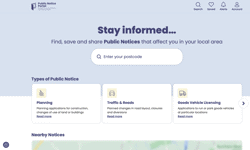There is no lack of press coverage reminding us that mobile will become the most important part of our publishing future. Mobile internet is becoming mainstream and it’s rapidly changing the perspective of many media organisations and marketers. Just as there’s no such thing as arriving fashionably late for a party, there are becoming fewer and fewer reasons for publishers to put off the inevitable move into mobile.
When asked the question in weekly board meetings, “What’s our mobile strategy?” and, “Why haven’t we got an iPhone app?”, most digital heads have changed their answer from, “Well it’s not a big part of our digital revenues”, to one that acknowledges that they have to decide what they are going to do.
There’s now plenty of empirical evidence and case studies to follow and, as we storm into 2010, there are plenty of organisations to follow who seem to have got it right.
Newspapers’ mobile offering
The newspaper groups have spent time working mobile out, initially struggling with the shift in publishing platforms, having spent a good deal of time getting the online product right. There was a period of stifling caused by associating the lucrative premium rate services of the early 2000s with the slow-burn activity of building a new mobile publishing channel.
It’s a challenge because most print organisations don’t have the digital product development expertise needed to work in the mobile sector. They don’t create content specifically for the platform, either editorially or digitally, and this is much needed especially if you want to work with the mobile network operators, for example. The operators who still dominate the world of mobile downloads and subscriptions, remain an important channel to market for the mobile publisher.
Whilst direct-to-consumer services grow fast, the networks still offer customers more integrated services and transparent pricing and therefore enjoy good revenues from content propositions. Short-form video or content that operators might be interested in licensing, and then offering to their customers, is big business. But this adds further complexity to an already complex business for the publisher. There’s the problem of mobile specific content creation and complex commercial management. It’s also difficult to articulate to a traditional publisher how it all works, never mind seek out, manage and close down the deals needed to justify the cost of specialist sales and relationship management.
But fear not, the mist should now be clearing and there are plenty of successful strategies to emulate. News International has a number of mobile sites developed specifically for the ‘small screen’. Thesun.mobi, Newsoftheworld.mobi, Timesonline.mobi, are all up and running and driving mobile traffic. Earlier this year, Guardian News & Media leapfrogged the competition, in terms of overall page impressions delivered by a mobile publisher’s site, by launching an elegant editorially based mobile site, m.guardian.co.uk.
The Guardian’s site focuses on taking its editorial to the mobile internet and adding value to its sub-brands, Soulmates and GuardianJobs, by doing the same. The site focuses on its strong editorial; it’s a very sound proposition and it generates sustainable advertising revenue. The Guardian’s site is one of the few UK sites to include not only mobile advertising banners, but also Google AdSense and dedicated sponsorship opportunities. The Telegraph, Trinity Mirror, Metro all have competing sites that reflect some excellent practice in mobile news sites and, of course, the BBC continues to blaze a trail with its investment in mobile platforms, recognising the rapid convergence with TV and web.
Measuring up
The publishing industry is starting to show signs of recognising these sites as important, and the market measurements are getting clearer. In May last year, comScore bought the specialist M:Metrics for $44.3 million and Neilsen also offers insight on mobile consumer activity. comScore, using their prompted panel survey, suggests that in excess of 20% of mobile phone users now look at ‘News & Info’ on a mobile browser and that ‘Social Networking’, not surprisingly, is one of the fastest growing activities. This is confirmed by Facebook’s recent announcement that it has 65 million mobile users worldwide, partly no doubt as a result of operators like O2 and Vodafone using Facebook in their consumer marketing, a classic example of how the networks work with “media” to establish mutual success. “Thank you for that,” says Facebook.
The question is, when does the 20% become 30% and reach the consumer penetration ‘sweet spot’, just like with the internet, when broadband in the home reached this critical point. According to Forrester Research, there will be a doubling of mobile internet penetration to 40% by 2014, so this point is likely to be in the next 2-3 years.
The arrival of the publisher mobile site has seen a new maturity in thinking at the AOP and ABCe. Whether as a result of pressure from their members or just good foresight, their expertise has grown. This is good news for promoting the mobile channel within publishing companies, because these are the organisations driving the measurements and benchmarks in the boardrooms.
ABCe states that any member site claiming more than 5% of audience and traffic from mobile would be subject to audit. Now, even the most successful sites are a way off making a full 5% of their online audience. But that time will come soon and much of publishers’ advertising prowess relies on their ABCe status to keep advertising rate cards finely tuned to deliver operational margin and of course value to their advertising customers. So we will soon see publishers establishing mobile internet in their key KPI’s and metrics.
Therefore with a mobile internet site, a few commercial deals, some mobile advertising and with traffic set to double in the next few years, it’s a relatively straightforward strategy to be working on. An initial investment and project cost is likely to pay back within 6-12 months. With mobile advertising yielding an effective CPM of between £6 and £60, it’s a real revenue stream and a relatively straightforward business line to implement. If you’re lucky enough to have the skills and resources internally, then the whole project is about getting access to expertise, training and knowledge transfer.
Finding the right partners, whether in technology or sales, needs to be done carefully. The technology is specialist but has strategic elements that need to be thought through and you need to interface with good content feeds. External sales companies need to be selected with consideration for how your brand is represented and how it functions with the existing sales teams. Mobile sales benefits from specialists, so perhaps use an experienced sales house to gain the knowledge that’s needed for the future. Mobile advertising may still be a relatively small element in advertising budgets, but it’s part of the budget process of most agencies now and not the “trial” monies of two years ago.
The App
Having established that the mobile internet no longer represents a challenge to the digital publisher, the next question is, “Why haven’t we got an iPhone app?”
How does the mobile app fit into this strategy? In the two years since it appeared, the iPhone has transformed the mobile phone industry. The two billion owners worldwide have kicked-started the mobile internet boom and have proved extremely willing to download – and pay for – a huge variety of apps to personalise their phones. In one swoop, the iPhone has created a mass market awareness of mobile applications and services and got it into the heart of the marketers.
This seems to be the next phase of the mobile publisher’s plan. There are a host of apps appearing which are generating their own subscription revenues and many that are free. The iPhone app for the Financial Times, for example, is free, although the content can only be fully accessed by subscribers, with the casual reader given three free articles per month. The Telegraph has a great app that’s free and even includes video. The Wall Street Journal is moving its app content behind a paywall, offering three months free access for anyone willing to register their details. BBC Worldwide’s Radio Times TV listings guide costs £2.99, while the Spectator magazine recently launched a 59p-a-week app.
Following Rupert Murdoch’s announcement in August, that he was going to start charging for online news content by July 2010, it comes as no surprise that the recent AOP census reveals that 70% of its respondents intend to start charging for content too, with 56% indicating that they will have chargeable apps within 12 months.
It seems a pretty straightforward business to be in too, as long as you find the right people to build your app and you know what you might want to include. Well it is for the most part, but it’s going to be an expensive exercise. Good paid-for apps (59p is the new free, by the way) need to be functional, they need to include more than you would get on the mobile internet for free and, of course, this brings you back to the conundrum of whether you have made-for-mobile content. Apps that do well aren’t just about browsing; they are about interacting with your phone and perhaps your account (Facebook, eBay). So there is some thinking to be done. And, should you have more than one? At between £10k and £50k for a branded app, that’s going to get expensive and be mindful that apps require maintaining and refreshing. Apple are exposing a host of capabilities through their developer toolkit, so take time to explore what can be achieved, but also do some forecasted volumes to look at the potential return before creating your ideal “suite” of apps.
Not just the iPhone
But there is more. If the cost of entry into the ‘apps’ market isn’t causing any trouble, then there are lots of other places to go. Following rapidly behind Apple’s App Store is Blackberry’s App World, Nokia’s OVI store, Samsung’s App Store, Telefonica’s mStore (only available in Spain at the moment), Microsoft Window Marketplace, Google’s Android platform and, recently, Vodafone’s 360 proposition.
According to comScore, there are 627 separate devices being used to access mobile media in the UK. The top six devices represent 15% of browsing, the top 20, 35% and the iPhone, 6%. The iPhone is undoubtedly the big player in activity and many website logs will reveal as much, but there are a large number of devices that form the long tail of mobile media users.
In the boardrooms of Vodafone, Telefonica, Nokia, Apple and Google (to name a few), there’s a strategic game being played out. Can one single device own the vast mobile consumer market or will the ‘long tail’ of consumers be where the real audience volume lies in the future.
It therefore remains to be seen whether or not the ‘app store’ concept is the one element of new mobile consumer behaviour that transports from the iPhone to other devices and other stores and as such the publishers ‘app strategy’ becomes more important than the ‘mobile internet’ strategy.
What is more likely is that you will need both. Don’t let the iPhone phenomenon of today prevent you getting the ‘hygiene’ factors right. If you haven’t addressed how you’re going to identify yourself in the mobile internet world, then there is work to be done because you’re going to need the revenue from that to finance the ever increasing application development.
Sweet smell of success
As Christmas approaches, it’s a good time to kick back and consider the options for mobile strategy 2010. It’s the mobile industry’s most important sales period. There will be lots of people powering up their new ‘app store/internet ready’ handset over the period and they will be surfing, downloading and generating new mobile audience figures for us to measure, monetise and grow. A particularly interesting time, not least for the 406 developers of ‘fart’ related apps on Apple’s App store, who are, no doubt as we speak, moving quickly to add the sprout widget to their Christmas offering.










